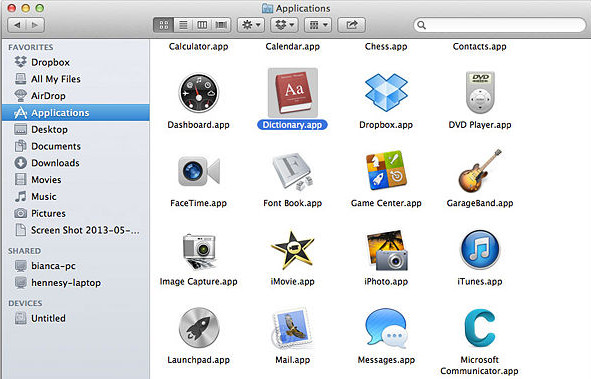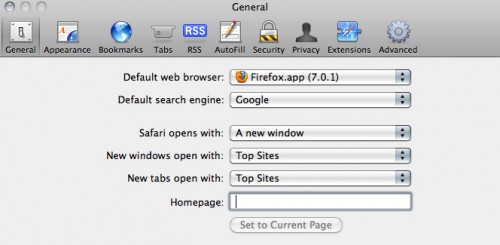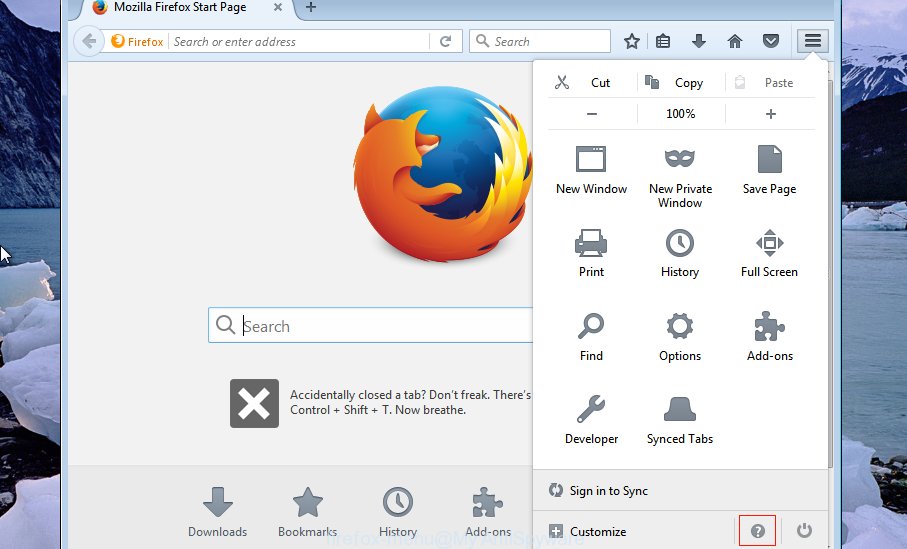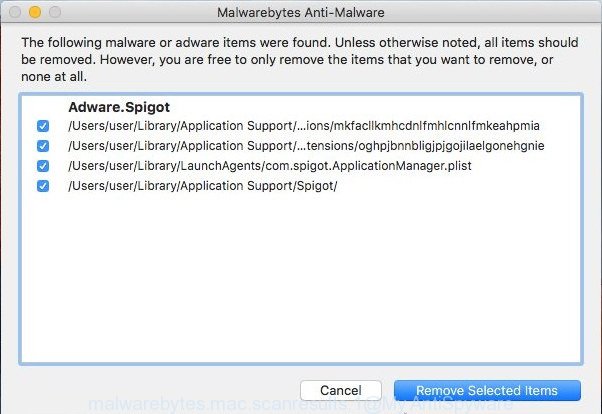What is UtilityParse
UtilityParse is a PUP (potentially unwanted program) that belongs to the category of Adware. Adware is a term that originates from ‘ad supported’ software. In many cases, ‘adware’ is considered by many to be synonymous with ‘malware’. Its purpose is to make profit for its author by showing unwanted ads to a user while the user is browsing the World Wide Web.

Unwanted ads
Another reason why you need to remove the UtilityParse adware is its online data-tracking activity. Adware can gather personal data to get profit. Adware can analyze your browsing, and gain access to your sensitive information and, later, can use it for marketing purposes. Thus, there are more than enough reasons to remove adware software from your Apple Mac.
By following few simple steps below it’s easy to detect and uinstall adware from your computer. Learn how to remove UtilityParse and other unwanted software, as well as how to run a full machine virus scan.
How does Adware get on your MAC OS
Adware commonly comes on the Apple Mac with free applications. Most commonly, it comes without the user’s knowledge. Therefore, many users aren’t even aware that their computer has been infected with potentially unwanted software and adware software. Please follow the easy rules in order to protect your Apple Mac from adware software and PUPs: don’t install any suspicious apps, read the user agreement and select only the Custom, Manual or Advanced installation option, don’t rush to press the Next button. Also, always try to find a review of the application on the Web. Be careful and attentive!
Threat Summary
| Name | UtilityParse, Utility Parse 1.0 app |
| Type | adware, potentially unwanted application (PUA), pop ups, popup virus, pop up advertisements |
| Symptoms |
|
| Removal | UtilityParse removal guide |
How to Remove UtilityParse adware
The following step-by-step tutorial will help you to get rid of UtilityParse ads from the Mozilla Firefox, Safari and Chrome. Moreover, the steps below will allow you to get rid of malicious software, browser hijackers, PUPs and toolbars that your Apple Mac may be infected. Please do the guide step by step. If you need help or have any questions, then ask for our assistance or type a comment below. Some of the steps below will require you to exit this web page. So, please read the steps carefully, after that bookmark it or open it on your smartphone for later reference.
To remove UtilityParse, complete the following steps:
- Manual UtilityParse adware removal
- Automatic Removal of UtilityParse
- How to stay safe online
- To sum up
Manual UtilityParse adware removal
In this section of the post, we have posted the steps that will help you to delete UtilityParse adware manually. Although compared to removal tools, this way loses in time, but you don’t need to download anything on the computer. It will be enough for you to follow the detailed guide with pictures. We tried to describe each step in detail, but if you realized that you might not be able to figure it out, or simply do not want to change the Microsoft Windows and browser settings, then it’s better for you to run utilities from trusted developers, which are listed below.
Remove adware through the Finder
Some potentially unwanted apps, browser hijacking programs and adware can be removed by uninstalling the free programs they came with. If this way does not succeed, then looking them up in the list of installed software in Finder. Use the “Move to Trash” command in order to remove them.
Open Finder and click “Applications” like below.

You will see a list of software installed on your computer. We recommend to pay maximum attention to the program you installed last. Most probably, it is the UtilityParse adware. If you’re in doubt, you can always check the program by doing a search for her name in Google, Yahoo or Bing. When the application which you need to uninstall is found, simply right press on its name, and choose “Move to Trash”.
Don’t forget, choose Finder, then “Empty Trash”.
Remove UtilityParse adware from Chrome
Reset Google Chrome will help you to get rid of UtilityParse ads from your internet browser as well as to recover browser settings infected by adware software. All unwanted, malicious and adware addons will also be removed from the web-browser. When using the reset feature, your personal information such as passwords, bookmarks, browsing history and web form auto-fill data will be saved.
First run the Google Chrome. Next, click the button in the form of three horizontal dots (![]() ).
).
It will open the Chrome menu. Choose More Tools, then click Extensions. Carefully browse through the list of installed extensions. If the list has the extension signed with “Installed by enterprise policy” or “Installed by your administrator”, then complete the following tutorial: Remove Google Chrome extensions installed by enterprise policy.
Open the Chrome menu once again. Further, press the option named “Settings”.

The browser will show the settings screen. Another method to open the Chrome’s settings – type chrome://settings in the web-browser adress bar and press Enter
Scroll down to the bottom of the page and click the “Advanced” link. Now scroll down until the “Reset” section is visible, as shown in the figure below and press the “Reset settings to their original defaults” button.

The Chrome will display the confirmation dialog box as shown on the screen below.

You need to confirm your action, click the “Reset” button. The browser will start the procedure of cleaning. When it is complete, the internet browser’s settings including newtab page, homepage and default search engine back to the values which have been when the Chrome was first installed on your MAC system.
Delete UtilityParse adware from Safari
The Safari reset is great if your internet browser is hijacked by UtilityParse or you have unwanted add-ons or toolbars on your browser, that installed by an malicious software.
Run Safari web-browser. Next, choose Preferences from the Safari menu.

First, click the “Security” tab. Here, choose “Block pop-up windows”. It will stop some types of pop ups.
Now, click the “Extensions” tab. Look for dubious addons on left panel, select it, then click the “Uninstall” button. Most important to delete all suspicious add-ons from Safari.
Once complete, check your home page and search provider settings. Click “General” icon. Make sure that the “Homepage” field contains the website you want or is empty.

Make sure that the “Search engine” setting shows your preferred search provider. In some versions of Safari, this setting is in the “Search” tab.
Get rid of UtilityParse from Firefox
If your Firefox internet browser is hijacked by UtilityParse or an unknown search engine displays results for your search, then it may be time to perform the web browser reset. However, your saved bookmarks and passwords will not be lost. This will not affect your history, passwords, bookmarks, and other saved data.
Click the Menu button (looks like three horizontal lines), and press the blue Help icon located at the bottom of the drop down menu as displayed in the following example.

A small menu will appear, click the “Troubleshooting Information”. On this page, press “Refresh Firefox” button as displayed on the image below.

Follow the onscreen procedure to return your Firefox web-browser settings to their default values.
Automatic Removal of UtilityParse
The adware can hide its components which are difficult for you to find out and remove completely. This can lead to the fact that after some time, the UtilityParse once again infect your MAC. Moreover, We want to note that it’s not always safe to remove adware software manually, if you do not have much experience in setting up and configuring the operating system. The best method to detect and get rid of adware software is to use free malicious software removal apps.
Automatically remove UtilityParse with MalwareBytes
We suggest using the MalwareBytes Free. You can download and install MalwareBytes to detect adware software and thereby remove UtilityParse ads from your web browsers. When installed and updated, this free malicious software remover automatically searches for and removes all threats exist on the machine.

- Visit the page linked below to download the latest version of MalwareBytes Anti-Malware (MBAM) for Mac.
Malwarebytes Anti-malware (Mac)
21175 downloads
Author: Malwarebytes
Category: Security tools
Update: September 10, 2020
- After the download is done, close all software and windows on your MAC system. Open a folder in which you saved it. Run the downloaded file and follow the prompts.
- Press the “Scan” button to perform a system scan with this tool for the UtilityParse adware. A system scan may take anywhere from 5 to 30 minutes, depending on your MAC OS. While the tool is checking, you can see count of objects and files has already scanned.
- When the checking is finished, MalwareBytes will open a list of all items detected by the scan. Next, you need to click “Remove Selected Items”.
How to stay safe online
By installing an ad blocker application like AdGuard, you’re able to block malicious websites, stop autoplaying video ads and delete a lot of distracting and unwanted ads on webpages.

AdGuard can be downloaded from the following link.
3888 downloads
Author: © Adguard
Category: Security tools
Update: January 17, 2018
When downloading is finished, run the downloaded file. You will see the “Setup Wizard” screen. Follow the prompts.
Each time, when you start your machine, AdGuard will start automatically and stop unwanted popup ads, block malicious and misleading web-pages.
To sum up
Now your Apple Mac should be clean of the UtilityParse adware software. We suggest that you keep MalwareBytes (to periodically scan your MAC OS for new adware softwares and other malicious software) and AdGuard (to help you block unwanted pop up advertisements and malicious web sites). Moreover, to prevent any adware software, please stay clear of unknown and third party programs.
If you need more help with UtilityParse related issues, go to here.

















